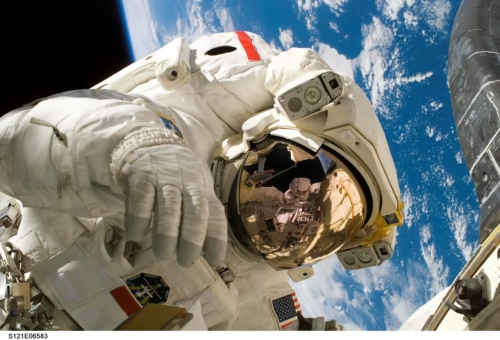Have you ever wondered what it would be like to gaze down at Earth from the vastness of space, watching the swirling blue oceans and sprawling continents below? The idea of space travel, once a distant dream reserved for astronauts and scientists, is now making its way to the itineraries of adventurers and vacationers alike. As we stand on the brink of a new era of travel, space tourism is gradually becoming the next vacation destination among the stars.
Space tourism, a concept that seemed confined to science fiction only a few decades ago, is becoming increasingly realistic and accessible. With companies like SpaceX, Blue Origin, and Virgin Galactic racing to make space more accessible, the prospect of traveling beyond our planet is no longer confined to the pages of a novel or the imagination of a film director. The burgeoning industry of space tourism not only offers a thrilling journey but also presents profound implications for both our understanding of space and our perspective on the world.
The allure of space tourism lies in its offering of an unprecedented experience—one that combines the thrill of travel with the awe of witnessing the universe from an entirely new perspective. For those with a taste for adventure, the chance to explore the final frontier is tantalizing. This article delves into the world of space tourism, exploring its history, current trends, key concepts, impacts, and future implications. By the end, you’ll understand why more people are considering space as their next vacation destination among the stars.
Table of Contents
Historical Context of Space Tourism
The journey to realizing space tourism begins with efforts made during the mid-20th century. The launch of Sputnik 1 by the Soviet Union in 1957 marked humanity’s entrance into the space age. This was followed by Yuri Gagarin’s historic flight in 1961, making him the first human in space. Fast forward to 1969, Neil Armstrong and Buzz Aldrin’s lunar landing ignited a public fascination with space. Despite these achievements, the idea of everyday people traveling to space remained elusive, a dream overshadowed by the geopolitical tensions of the Cold War.
It wasn’t until the late 20th century that visionaries began contemplating how space could be made accessible beyond government missions. In 2001, Dennis Tito famously became the first space tourist, traveling to the International Space Station (ISS) aboard a Russian Soyuz spacecraft. His journey opened the door to commercial space travel, signaling a shift from government-only missions to private and commercial endeavors.

Current Trends in Space Tourism
In recent years, the development of reusable rocket technology has marked a turning point in making space tourism viable. Companies like SpaceX have drastically reduced the cost of launching payloads into space, paving the way for private enterprises to pioneer tourism experiences. SpaceX, with its Crew Dragon spacecraft, plans to send private citizens to orbit and beyond with missions such as the Polaris Dawn and the Tourism Moon Flyby by 2023.
Meanwhile, Virgin Galactic and Blue Origin are focused on suborbital flights, offering passengers a brief but breathtaking view of Earth and a few precious minutes of weightlessness. Virgin Galactic’s VSS Unity and Blue Origin’s New Shepard are at the forefront, with many scheduled tests and commercial flights. These ventures have demonstrated that space tourism is not just a dream but a rapidly developing industry.
Key Concepts and Definitions
Space tourism involves several key concepts that distinguish it from traditional forms of travel. Firstly, there is the distinction between suborbital and orbital flights. Suborbital flights involve traveling to the edge of space without completing an orbit around Earth, offering a few minutes of weightlessness and a view of the planet’s curvature. Orbital flights, in contrast, involve orbiting Earth and can last several days, providing a more comprehensive space experience.
Understanding the concept of microgravity, or zero gravity, is essential when discussing space tourism. Microgravity occurs when objects are in free fall, providing the sensation of weightlessness—a significant draw for potential space tourists. Additionally, the term “spaceflight participants” is often used to describe individuals who travel to space for recreational purposes, distinguishing them from astronauts, who undergo extensive training and perform specific duties on missions.
Case Study: The Inspiration4 Mission
The Inspiration4 mission, launched by SpaceX in September 2021, serves as a pivotal case study in the advancement of space tourism. This fully private mission included a crew of four civilians who carried out a three-day orbital flight aboard the Crew Dragon Resilience spacecraft. The mission, funded by billionaire Jared Isaacman, aimed to raise awareness and funds for St. Jude Children’s Research Hospital, showcasing how space tourism can intersect with philanthropy.
The success of Inspiration4 demonstrated the feasibility of civilian space travel and captured the world’s attention. The mission’s participants underwent rigorous training, much like professional astronauts, primarily focusing on safety, mission operations, and team-building. Their journey emphasized that with proper training and preparation, ordinary individuals could venture into space, marking a significant milestone for space tourism.

Impacts and Implications of Space Tourism
The rise of space tourism brings profound impacts and implications. On an economic level, the industry has the potential to generate significant revenue, creating jobs and encouraging innovation in space technologies. Moreover, the demand for space tourism is likely to drive advances in propulsion, spacecraft design, and sustainable technologies, benefiting the broader aerospace sector.
From a societal perspective, space tourism has the potential to alter our worldview. Experiencing Earth from orbit, often referred to as the “overview effect,” can evoke a sense of unity and a greater appreciation for our planet. Many astronauts describe this experience as transformative, fostering a deeper connection to Earth and a commitment to protecting it. As more people have access to this perspective, the global dialogue about environmental responsibility and sustainability may gain new momentum.
Different Perspectives on Space Tourism
In evaluating the impact of space tourism, it is essential to consider various perspectives. Proponents argue that space tourism democratizes space travel, opening up new avenues for exploration and understanding. They believe that experiencing space firsthand fosters greater empathy and a shared sense of humanity.
Conversely, critics raise concerns about the commercialization of space, emphasizing the need for regulations to ensure ethical and sustainable practices. There is also the argument about resource allocation, questioning whether investment in space tourism might divert funds from addressing pressing issues on Earth.
To provide a balanced view, consider the following table comparing different perspectives:
| Perspective | Supporting View | Critical View |
|---|---|---|
| Economic | Job creation and technological innovation | Resource allocation concerns |
| Environmental | Increased awareness of Earth’s fragility | Potential carbon footprint from launches |
| Societal | Inspires unity and global responsibility | Commercialization and exclusivity concerns |
| Regulatory | Encourages development of space policies | Need for stricter regulations |
Environmental and Ethical Considerations
The environmental implications of space tourism cannot be ignored. Rocket launches release CO2 and other pollutants into the atmosphere, albeit in smaller quantities than most traditional industries. As the industry grows, it will be crucial to develop more sustainable launch systems to minimize environmental impact. Ethical considerations also arise, particularly in terms of affordability and accessibility. Efforts must aim to ensure that space tourism doesn’t become accessible only to the wealthy, perpetuating exclusivity.

Predictions and Future Directions
Looking to the future, the potential for growth in the space tourism industry is immense. As technology continues to advance and economies of scale are realized, the cost of space travel is expected to decrease, making it more accessible to a larger audience. Predictions indicate that in the coming decades, space hotels, lunar vacations, and even trips to Mars could become part of the tourism landscape.
The integration of artificial intelligence and virtual reality could further enhance space tourism experiences, providing immersive pre-flight training and in-flight entertainment. These technologies could also help mitigate some of the physical and psychological challenges associated with space travel. Additionally, the evolving regulatory framework will play a vital role in shaping the industry’s trajectory, ensuring safety, sustainability, and ethical standards are maintained.
Implications for Society and Industry
The implications of space tourism on society and various industries are profound. It presents opportunities to inspire the next generation of scientists, engineers, and explorers while fostering international collaboration. Space tourism could also drive advancements in related fields, such as medicine, materials science, and environmental science, as new challenges demand innovative solutions.
From an educational viewpoint, the narratives and experiences of space tourists could enrich science and technology curriculums, providing real-world examples of concepts like propulsion, gravity, and the study of other celestial bodies. The expansion of space tourism also challenges us to rethink our place in the universe and our relationship with our home planet. What will space tourism mean for humanity’s future, and how will it influence our understanding of the cosmos?

Conclusion
In conclusion, space tourism is no longer a dream but an emerging reality, poised to redefine how we perceive travel and exploration. By examining the historical context, current trends, key concepts, and potential impacts, it is clear that space tourism offers both exciting opportunities and significant challenges. The development of this industry will require a careful balance between innovation and responsibility to ensure that it benefits society as a whole.
As commercial spaceflight becomes more accessible, it has the potential to transform our view of Earth and ignite a renewed passion for exploration. What remains to be seen is the extent to which space tourism can inspire global unity and environmental stewardship. One thing is certain: the journey among the stars will continue to captivate our imaginations for years to come. What would be your perspective on this shift, and do you see yourself embarking on a vacation among the stars?


